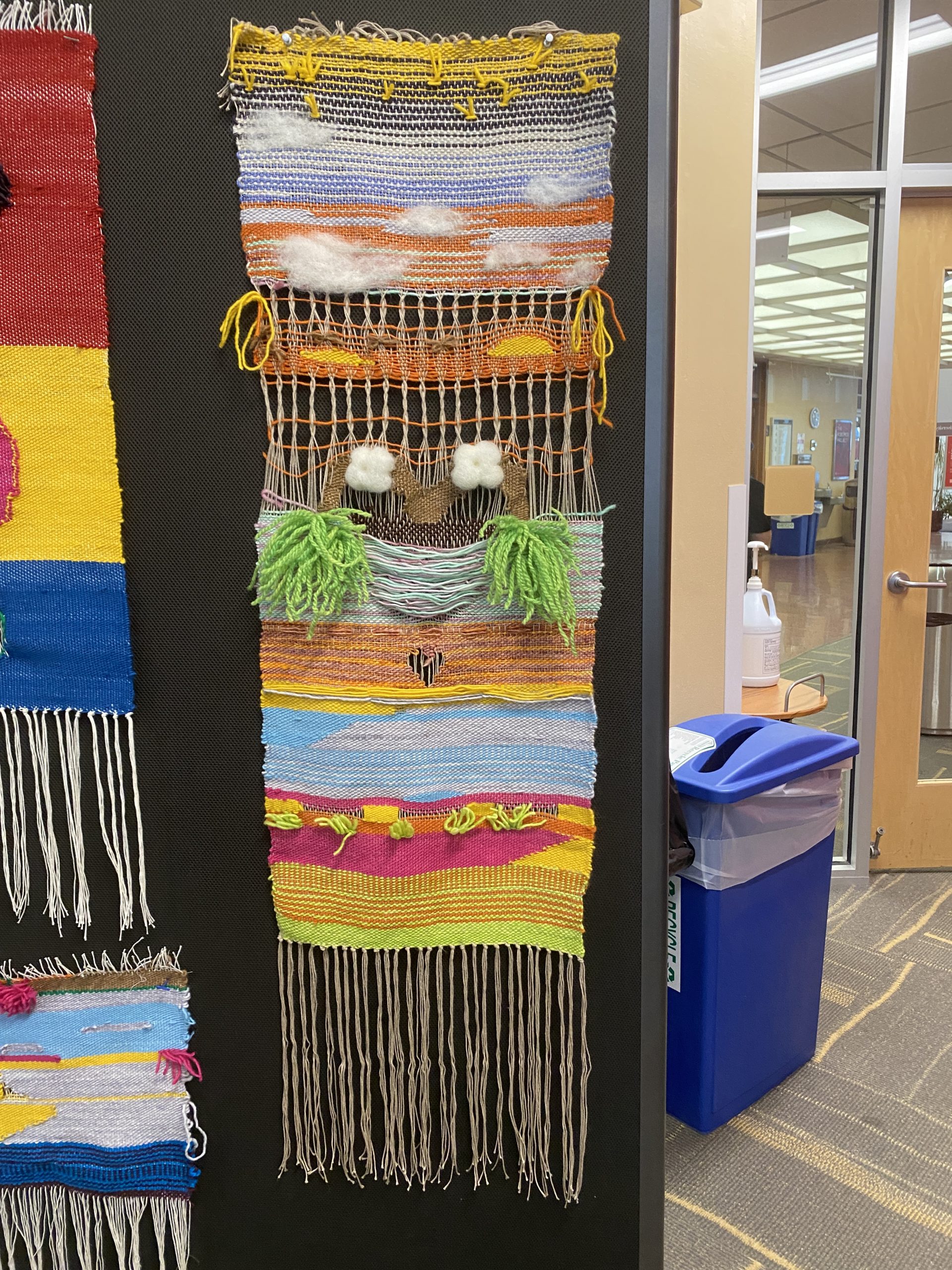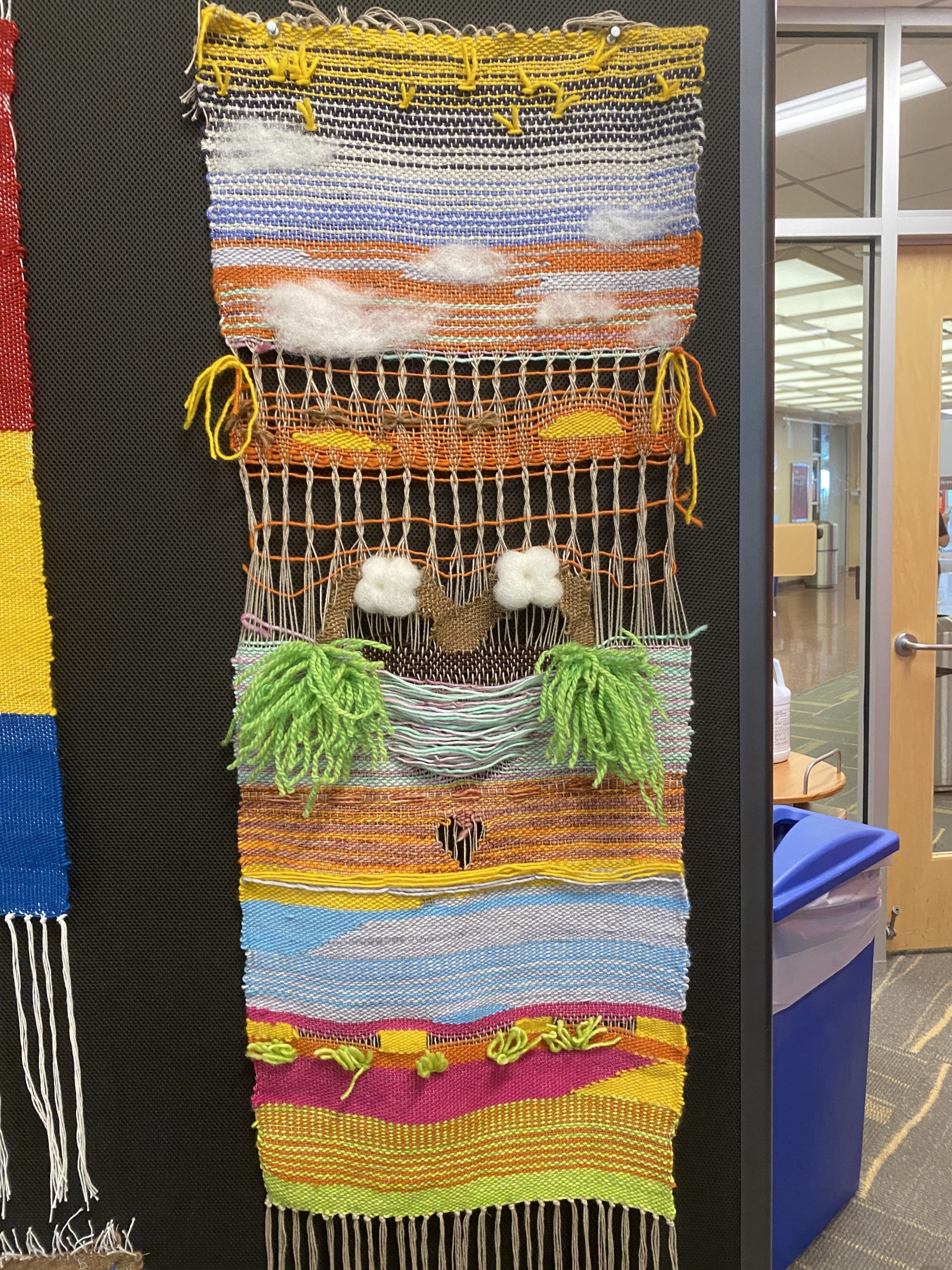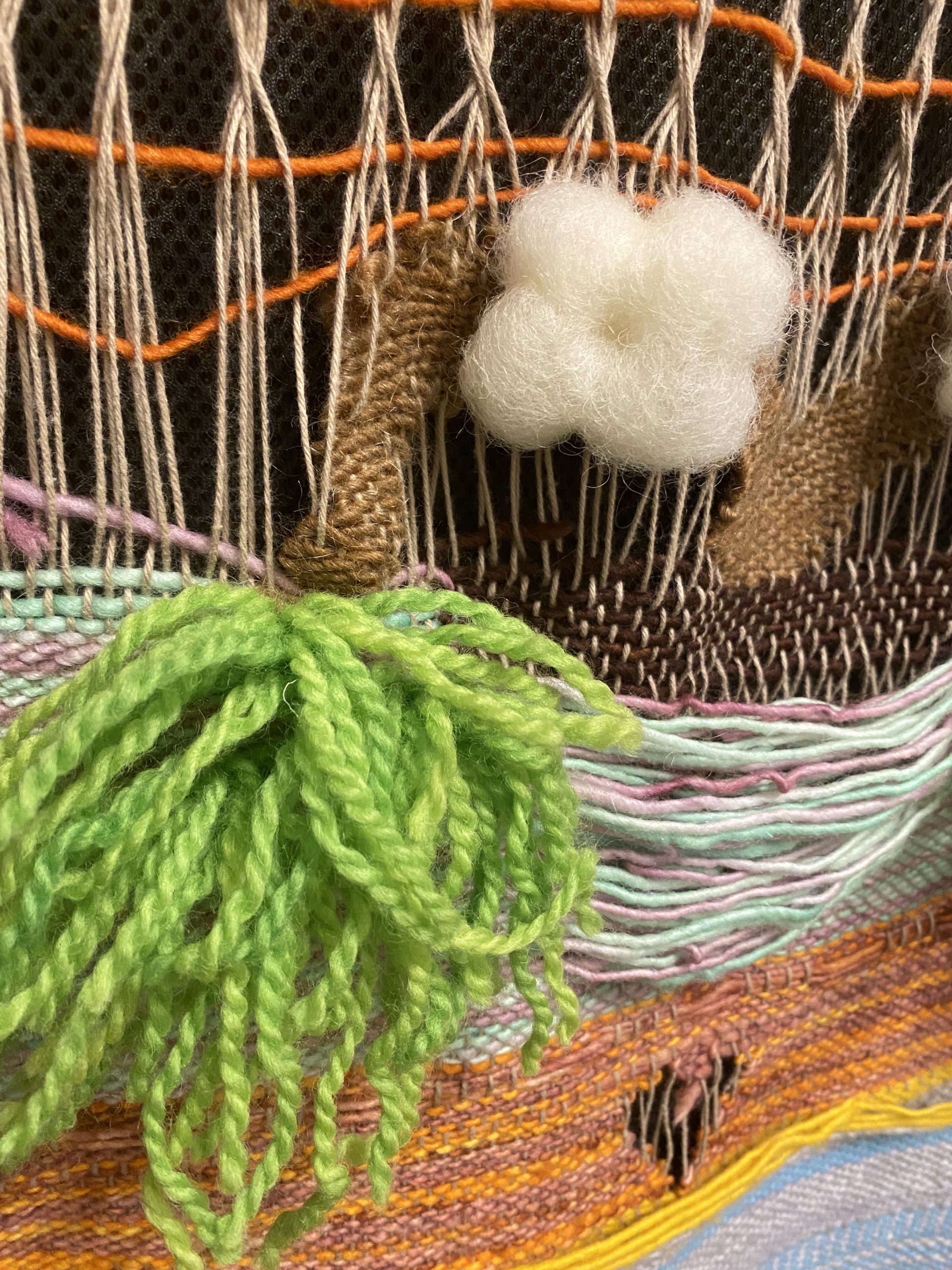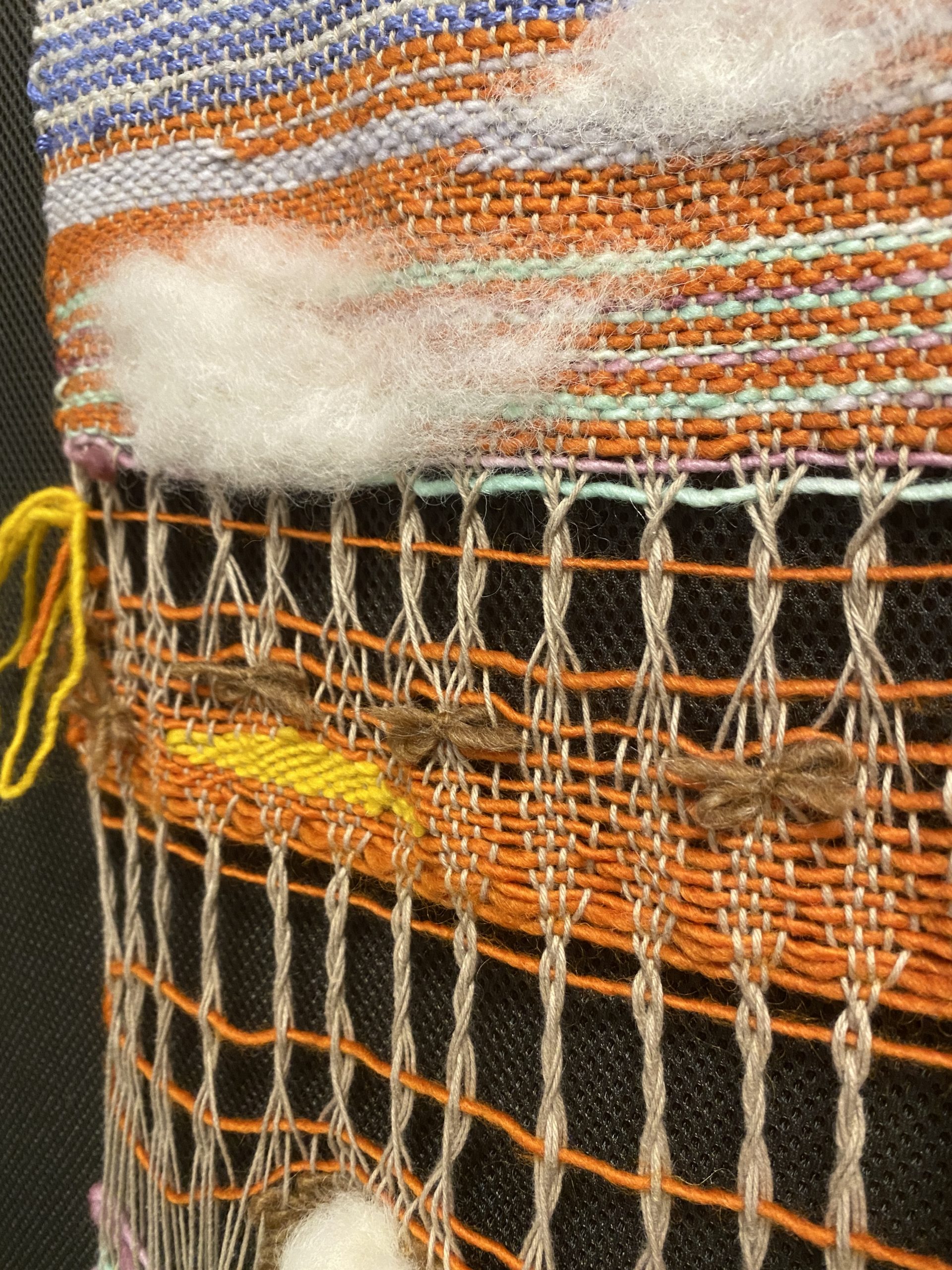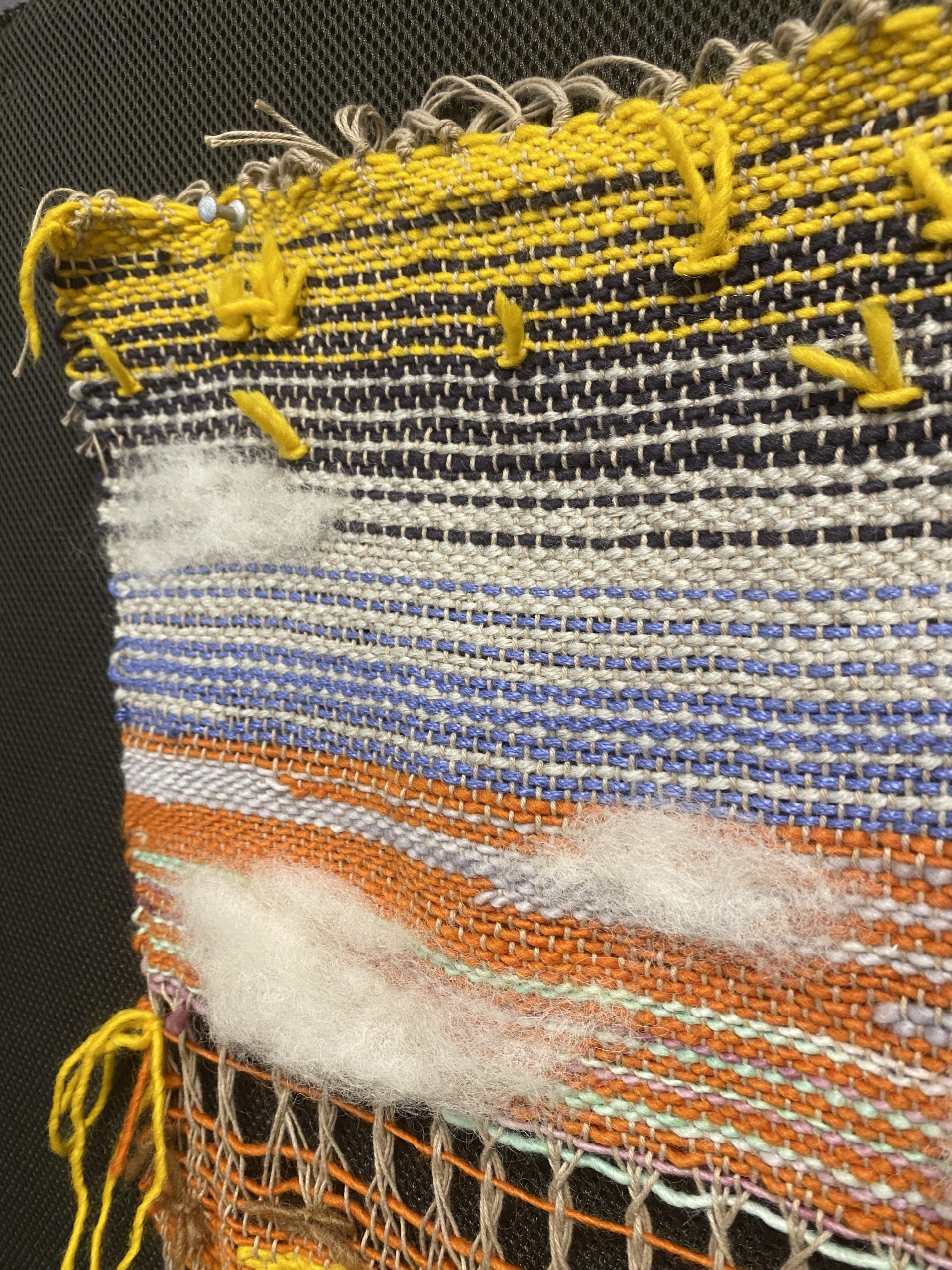The Process
For my weaving, I wanted to make something pictorial, something that is instantly recognizable as something in the real world. Since I was new to weaving, the first ten inches largely consisted of experimentation, where I exposed myself to the main techniques that I would end up using in my final weaving. After the ten-inch mark, I ended up taking a middle ground between letting my weaving guide me and creating something pictorial. The “tree pot” was initially supposed to be a giant bubblegum, but I saw the half-finished sphere as an opportunity to weave a plant on top. This inspiration extended itself into a complete view of the horizon in the sunset, with birds and stars lighting up the orange sky amongst the clouds. I found the process to be tedious at times but extremely rewarding overall.
What Worked Well
I was surprised at how well the rya knots and the felted material turned out. To represent the leaves on the tree, I bundled ten threads together and used the rya knot technique on the same two wrap threads. This created a spreading out effect among the green threads which matches how I imagine palm trees’ leaves spread out. It also gave a very distinct 3D effect to the weaving which I was very pleased by. As for the felted flower and clouds, I really liked how the dry pieces maintain both their shape and fluffiness. The flower had differing heights to represent the petals and its inner organs, and the clouds had different sizes and densities to mirror what we see in nature. It added a very interesting layer on top of the threads, which I was very happy with.
Areas of Improvement
Even though I was very happy with my end product, there are a few areas where I think I can definitely do better, them being the fringes and pattern usage. For the fringes, there are some notable inconsistencies in the tension for each line of weaving, resulting in the final piece having somewhat varying widths in different areas. I could definitely have left more room before beating each line of thread onto my weaving in some places. As for the patterns, I feel I could have explored some more of the left-right patterns. The weaving is currently very up-down oriented and it would have added another interesting dynamic to the overall piece.
What I Learned
Among the many things I learned, the two standouts on top of learning how to weave are patience and the joys of exploration. I never knew that weaving could take as much time as it did for me. Especially for the interlocking and branch-making portions, it was somewhat sad to see myself making progress at the rate of less than two inches an hour. This journey not only gave me the opportunity to rediscover what it means to be patient and work on something attentively for hours, it also gave me a newfound respect for artists who do weave professionally. I could never imagine the dedication that they must have to complete works that are measured in yards rather than inches. When my piece was still unfinished, I found it very rewarding to find inspiration from my existing piece and build it into something interesting. It was this initial exploration before every “section” that allowed me to build a pictorial representation of a tree under the sunset. Usually, I’m used to pre-planning my entire work before executing on it. This experience definitely opened me up to trying new things and letting my mind go for a bit before consolidating on an idea and turning it into reality. I will be carrying this attitude into the future projects are to come.
Five Directions
- The same tree but under purely the night sky, shooting stars, and a shining moon
- A sprout under the same background with its leaves weaved in the piece instead of using rya knots
- The same tree but without the leaves and in the winter. Can incorporate elements of snow and maybe even a snowman
- A flower plant with much more extensive dry felting for the flowers. Can use different colors for different flowers.
- A giant bubblegum to pay homage to my initial inspiration
